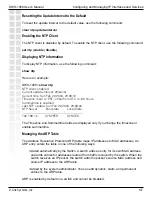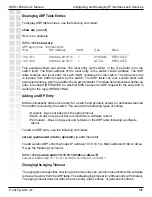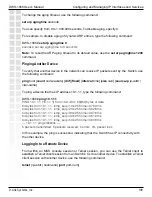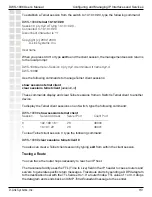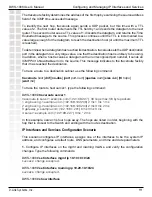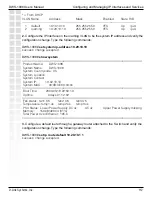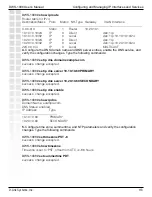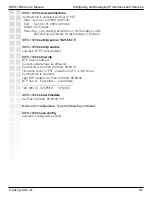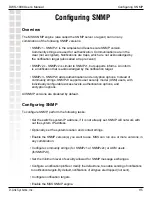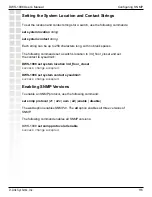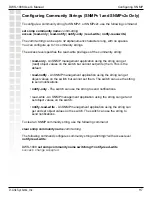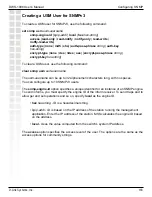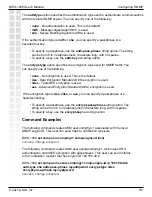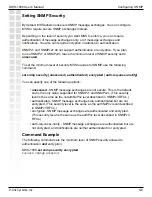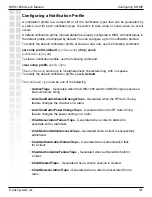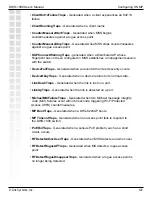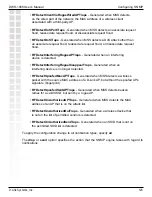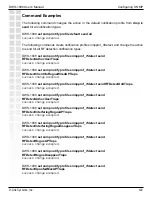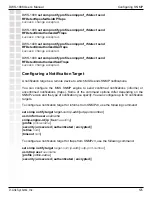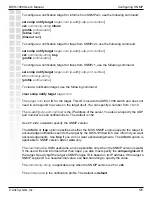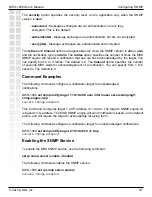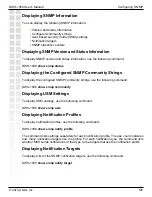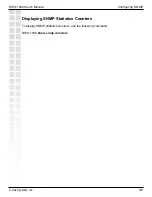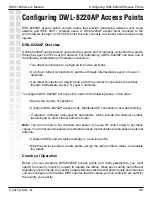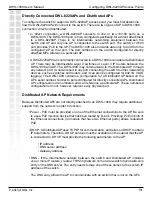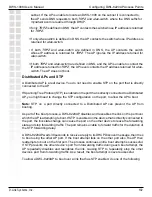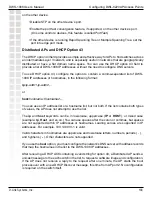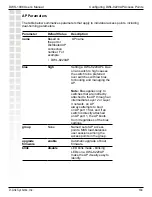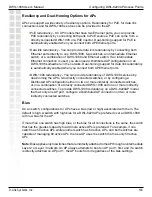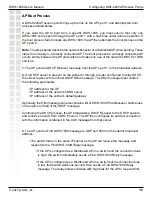
121
DWS-1008 User’s Manual
D-Link Systems, Inc.
Configuring SNMP
Configuring a Notification Profile
A
notification profile
is a named list of all the notification types that can be generated by
a switch, and for each notification type, the action to take (drop or send) when an event
occurs.
A default notification profile (named
default
) is already configured in MSS. All notifications in
the default profile are dropped by default. You can configure up to 10 notification profiles.
To modify the default notification profile or create a new one, use the following command:
set snmp profile
{
default
|
profile-name
} {
drop
|
send
}
{
notification-type
| all}
To clear a notification profile, use the following command:
clear snmp profile
profile-name
The
profile-name
can be up to 32 alphanumeric characters long, with no spaces.
To modify the default notification profile, specify
default
.
The
notification-type
can be one of the following:
•
AuthenTraps
- Generated when the DWS-1008 switch’s SNMP engine receives a
bad community string.
•
AutoTuneRadioChannelChangeTraps
- Generated when the RF Auto-Tuning
feature changes the channel on a radio.
•
AutoTuneRadioPowerChangeTraps
- Generated when the RF Auto-Tuning
feature changes the power setting on a radio.
•
ClientAssociationFailureTraps
- Generated when a client’s attempt to
associate with a radio fails.
•
ClientAuthorizationSuccessTraps
- Generated when a client is successfully
authorized.
•
ClientAuthenticationFailureTraps
- Generated when authentication fails
for a client.
•
ClientAuthorizationFailureTraps
- Generated when authorization fails for
a client.
•
ClientClearedTraps
- Generated when a client’s session is cleared.
•
ClientDeAssociationTraps
- Generated when a client is dissociated from a
radio.

